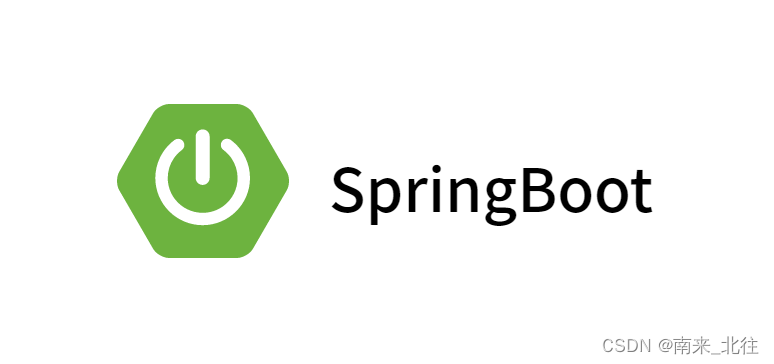前言
Hello, 小伙伴们,你们的作者菌又来了,前不久,我们学习了一种数据结构----栈,他特殊的性质使得他在一些数据管理的问题上被广泛的使用,那今天,我们就来学习另一种十分重要的数据结构--对列。
在开始之间,还是按例求三,如果你喜欢我的内容,就请不要忘记,点赞、评论和收藏,你们的支持就是我更新的动力,万分感谢!!
好,我们先在开始。
1.队列的介绍
基本概念:
只允许在⼀端进⾏插⼊数据操作,在另⼀端进⾏删除数据操作的特殊线性表,队列具有先进先出FIFO(First In First Out)
入队列:进行插入操作的一段为队尾;
出队列:进行删除操作的一端称为对头。

队列的底层结构选型:
队列也可以用数组和链表的方式链实现,使用链表的结构实现会更加的优秀,因为如果使用数组的结构,出队列在数组的头部进行,效率会十分底下!!
2.队列的实现
我门还是先创建三个文件(就向实现其他数据结构一样):

2.1队列结构的定义:
typedef int QDataType;
typedef struct QueueNode
{
QDataType x;
struct QueueNode* next;
}QueueNode;
typedef struct Queue
{
QueueNode* phead;
QueueNode* ptail;
}Queue;
怎样来理解这样的定义呢?
队列的定义底层使用的确实是单链表的结构,但是特殊的就是,他只能在头部出数据,只能在为部插入数据,所以,我们可以使用两个结构体,来实现队列:
phead用于出数据;
ptail用于输入数据。

2.2队列的初始化(QueueIit函数的实现)
2.2.1函数的定义
//初始化队列
void QueueInit(Queue* ps);2.2.2函数的实现
//初始化队列
void QueueInit(Queue* ps)
{
assert(ps);
ps->phead = ps->ptail = NULL;
}初始化的操作与单链表相似。
代码测试:

2.3队列的数据插入(QueuePush函数的实现)
2.3.1 函数的定义
//入队列
void QueuePush(Queue* ps, QDataType x);这个也和单链表的结构相似,但是要注意几点,我们先来看函数的是实现代码:
2.3.2函数的实现
QueueNode* BuyNode(QDataType x)
{
QueueNode* newnode = (QueueNode*)malloc(sizeof(QueueNode));
if (newnode == NULL)
{
perror("malloc Fail!!");
exit(1);
}
newnode->x = x;
newnode->next = NULL;
return newnode;
}
//队列的销毁
void QueuePush(Queue* ps, QDataType x)
{
assert(ps);
QueueNode* New = BuyNode(x);
if (ps->phead == NULL)
{
ps->phead = ps->ptail = New;
}
else
{
ps->ptail->next = New;
ps->ptail = ps->ptail->next;
}
}1.我们注意不要将QueueNode 和Queue的结构混淆;
2.一定要记得,将新节点的next指针置位NULL;
3.要考虑到ps->phead 和 ps->ptail都为NULL的情况!!
代码测试:

入队列的操作就完成了!!
2.4队列的出数据 (QueuePop函数的实现)
2.4.1函数的定义:
//出队列
void QueuePop(Queue* ps);2.4.2代码的实现
这里的出队列,其实和单链表的头删是一个逻辑,还是要考虑到一下几点:
1.删除数据的前提是,队列中有元素可删!
2.不能将队列删除为NULL后,任然删除数据!!
bool IsEmpty(Queue* ps)
{
return ps->phead == NULL;
}
//IsEmpty函数可以判断队列存储数据的情况
void QueuePop(Queue* ps)
{
assert(ps);
assert(!IsEmpty(ps));
QueueNode* ret = ps->phead->next;
free(ps->phead);
ps->phead = ret;
} 代码测试:

2.5取队列的头(尾)数据(QueueTop 函数和 QueueBack函数的实现)
2.5.1函数的定义
//取对头数据
QDataType QueueTop(Queue* ps);
//取队尾数据
QDataType QueueBack(Queue* ps);这样的操作十分的简单,就和前面我们学习栈的时候,取数据的操作大致相同
2.5.2函数的实现
//取对头数据
QDataType QueueTop(Queue* ps)
{
assert(ps && !IsEmpty(ps));
return ps->phead->x;
}
//取队尾数据
QDataType QueueBack(Queue* ps)
{
assert(ps && !IsEmpty(ps));
return ps->ptail->x;
}这样的操作十分的简单,我们只需要确保队列中有元素,就可以取出队头和对尾元素。
接下来我们来测试一下,看看能不能达到我们想要的效果:

2.6队列中的数据个数
在这里,我们可以先写一个函数CountSize来解决这样的问题:
//得出队列中的数据元素个数
int CountSize(Queue* ps);int CountSize(Queue* ps)
{
assert(ps);
QueueNode* pcur = ps->phead;
int size = 0;
while (pcur)
{
size++;
pcur = pcur->next;
}
return size;
}
经过测试,我们可知,这样是可以解决问题的,但是这样做是绝对不规范的!!
因为队列和栈一样,不能被遍历,也不能被随机的访问!!
同时,如果外界的用户要进行频繁的数据个数获取,我们出于时间复杂度的考虑,因该怎样来修改我们的代码呢?
所以,我们要怎样才能解决问题呢?
或许,我们在定义队列的节点时,就加上一个元素,来记录我们插入数据的个数:
如,这是我们原来的队列定义:
typedef int QDataType;
typedef struct QueueNode
{
QDataType x;
struct QueueNode* next;
}QueueNode;
typedef struct Queue
{
QueueNode* phead;
QueueNode* ptail;
}Queue;
我们可以修改为
typedef int QDataType;
typedef struct QueueNode
{
QDataType x;
struct QueueNode* next;
}QueueNode;
typedef struct Queue
{
QueueNode* phead;
QueueNode* ptail;
int size;//增加一个元素来记录存储数据的个数!!
}Queue;
每插入一次数据,我们就然size++;
每出一次队列,size--;
在要获取元素个数时,我们只需要,将size返回就行!所以,我们可以来试试这样的方法:
所以CountSize我们可以改写为
int CountSize(Queue* ps)
{
assert(ps);
return ps->size;
}接下来,我们来测试一下:

2.7队列的销毁(QueueDstroy函数的实现)
2.7.1函数的定义:
void QueueDstroy(Queue* ps);
//队列的销毁2.7.2函数的实现
void QueueDestroy(Queue* ps)
{
assert(ps && !IsEmpty(ps));
QueueNode* ret = ps->phead;
while (ret)
{
QueueNode* next = ret->next;
free(ret);
ret = next;
}
ps->ptail = ps->phead = NULL;
ps->size = 0;
}销毁的操作和之前链表的操作相似,如果对链表的知识掌握的够好,我们可以直接仿写!!
3.代码展示:
3.1Queu.h
#pragma once
#include<stdio.h>
#include<assert.h>
#include<stdlib.h>
#include<stdbool.h>
typedef int QDataType;
typedef struct QueueNode
{
QDataType x;
struct QueueNode* next;
}QueueNode;
typedef struct Queue
{
QueueNode* phead;
QueueNode* ptail;
int size;
}Queue;
//初始化队列
void QueueInit(Queue* ps);
//队列的销毁
void QueueDestroy(Queue* ps);
//入队列
void QueuePush(Queue* ps, QDataType x);
//出队列
void QueuePop(Queue* ps);
//取对头数据
QDataType QueueTop(Queue* ps);
//取队尾数据
QDataType QueueBack(Queue* ps);
//得出队列中的数据元素个数
int CountSize(Queue* ps);
bool IsEmpty(Queue* ps);3.2Queue.c
#define _CRT_SECURE_NO_WARNINGS 1
#include"Queue.h"
//初始化队列
void QueueInit(Queue* ps)
{
assert(ps);
ps->phead = ps->ptail = NULL;
ps->size = 0;
}
void QueueDestroy(Queue* ps)
{
assert(ps && !IsEmpty(ps));
QueueNode* ret = ps->phead;
while (ret)
{
QueueNode* next = ret->next;
free(ret);
ret = next;
}
ps->ptail = ps->phead = NULL;
ps->size = 0;
}
QueueNode* BuyNode(QDataType x)
{
QueueNode* newnode = (QueueNode*)malloc(sizeof(QueueNode));
if (newnode == NULL)
{
perror("malloc Fail!!");
exit(1);
}
newnode->x = x;
newnode->next = NULL;
return newnode;
}
void QueuePush(Queue* ps, QDataType x)
{
assert(ps);
QueueNode* New = BuyNode(x);
if (ps->phead == NULL)
{
ps->phead = ps->ptail = New;
}
else
{
ps->ptail->next = New;
ps->ptail = New;
}
ps->size++;
}
bool IsEmpty(Queue* ps)
{
return ps->phead == NULL;
}
void QueuePop(Queue* ps)
{
assert(ps);
assert(!IsEmpty(ps));
QueueNode* ret = ps->phead->next;
free(ps->phead);
ps->phead = ret;
ps->size--;
}
//取对头数据
QDataType QueueTop(Queue* ps)
{
assert(ps && !IsEmpty(ps));
return ps->phead->x;
}
//取队尾数据
QDataType QueueBack(Queue* ps)
{
assert(ps && !IsEmpty(ps));
return ps->ptail->x;
}
//得出队列中的数据元素个数
int CountSize(Queue* ps)
{
assert(ps);
return ps->size;
}3.3test.c
#define _CRT_SECURE_NO_WARNINGS 1
#include"Queue.h"
void Test()
{
Queue s;
QueueInit(&s);
QueuePush(&s, 0);
QueuePush(&s, 1);
QueuePush(&s, 2);
QueuePop(&s);
//取对头数据
printf("Top:%d\n", QueueTop(&s));
//取队尾数据
printf("Back:%d\n", QueueBack(&s));
printf("Size:%d\n", CountSize(&s));
QueueDestroy(&s);
printf("Size:%d\n", CountSize(&s));
}
int main()
{
Test();
return 0;
}好,今天的学习就到这里,我们下期再见,拜拜!!!


![[Python][列表和元组]详细讲解](https://i-blog.csdnimg.cn/direct/a01060d6642241bca1bc0ca3a63783ec.png)















